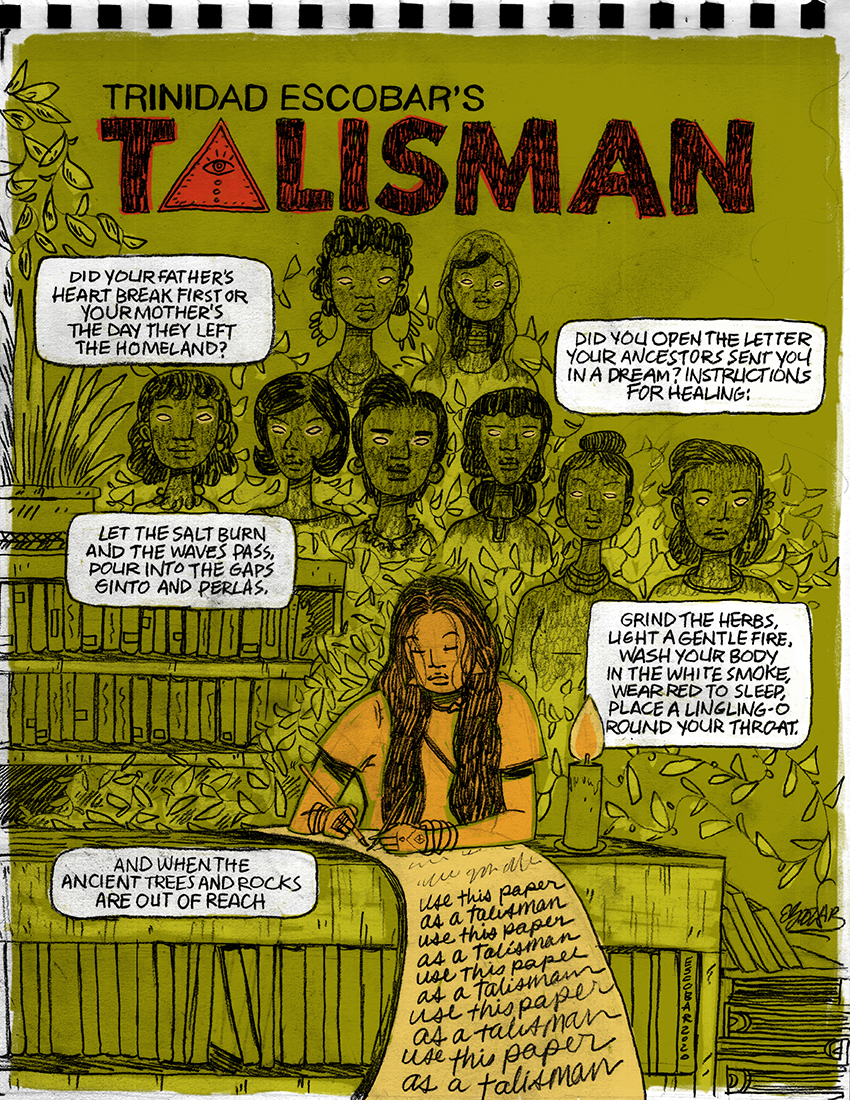Life as an Upāsikā
Trinidad is a medium, channeler, animist, and Buddhist. She was born during a powerful storm, like Nikola Tesla (they share the same birthday). Typhoon Gading flooded her parent’s home on July 10th, 1986, the morning that Trinidad was to be born. A sirena, or sea spirit, came to bless her birth father underwater. The sirena helped move debris that allowed the flooded home to drain and then Trinidad was born.
Trinidad has been meditating since childhood. Her spiritual teachers over the years were elder witches, bone-setters and diviners, Filipino hilots and herbalists, and Buddhist monks, lamas, and Venerable Rinpoches. Her teachers instilled in her the animist understandings of the world as well as the secret teachings, rituals of indigenous Buddhism. She has Buddhist empowerments to work with her principal deities Green Tara, Vajrayogini, and others. Her life as an upāsikā is modeled after a Thai laywoman, the honorable Upāsikā Kee Nanayon.
The Catholic beliefs and teachings that her parents tried to instill in her at a young age greatly contradicted the knowledge that Trinidad contained in her mind as a savant. As a savant—or an Autistic person who seems to have been born with extraordinary skills or knowledge— Trinidad had a firm understanding about complex subjects like emotions, race, gender, oppression, consciousness, with evidence showing up as early as age three. She was a semi-verbal, hyperlexic Autistic child. This means that she only spoke with a couple of people sometimes but showed signs of advanced vocabulary acquisition and application. Some of this evidence showed up in her many childhood spiral notebooks that depicted stories of people’s suffering and the ways people experience injustice in our world.
Part of her Autism included synesthesia (sound-texture, color-texture) and an eidetic memory, both of which made life both difficult and beautiful. Not only did she remember details from toddler-years very easily throughout her life but she also remembered her last two lives on earth. She believed in reincarnation although no one in her family had taught her this concept. All of this shaped her world as a developing, young artist. Art-making and thinking like an artist pushed Trinidad’s mind against the boundaries of her culture, family, and society. By age 12 she had completely renounced Catholicism. She found comfort in indigenous animist teachings from around the world, as found in books, documentaries, and oral storytelling. By age 16 she decided that animism and the advanced meditation techniques of indigenous Buddhism matched the knowledge that she carried within her. She sought out teachers for the next twenty years.
Trinidad has experienced death herself three times. She shares her knowledge of death and the afterlife, communicating with spirits, and consciousness at her art workshops and lectures. Her life as an upāsikā includes assisting her friends, family, and community with difficult life transitions like illness and death, and with difficult emotions like grief. She does not charge a fee for her upāsikā services because it is her purpose here on Earth.



